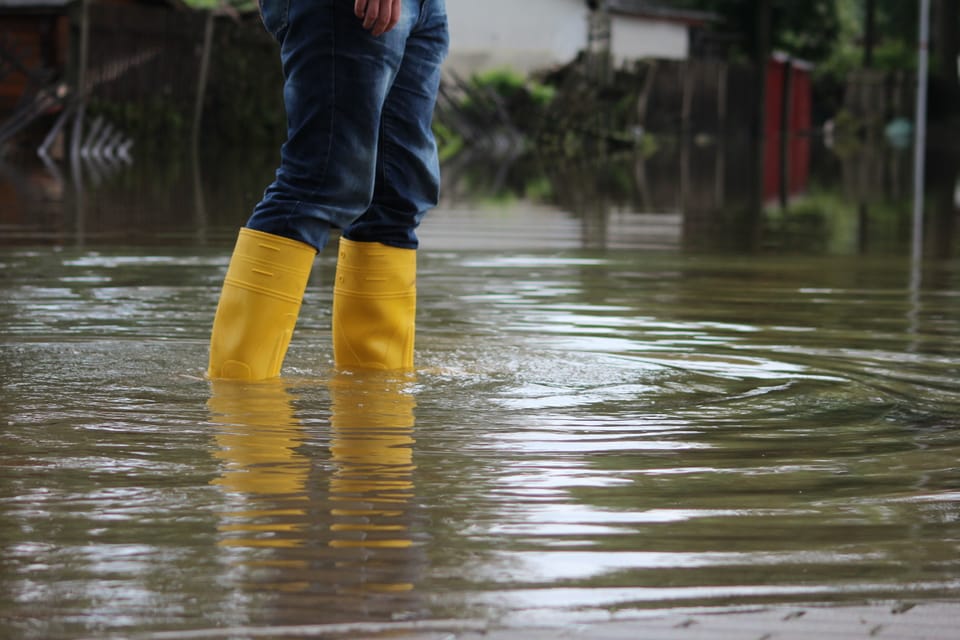Flash-flood prep

How does data-center consumption affect construction? And what eco-friendly construction materials are budget-friendly, too? Today we look at some expert insight into these questions and also glean some valuable information on high-water emergencies from a rescue team coordinator. But first: Check out the U.S. metro areas where construction jobs rose YoY.

>> Yer barn tootin'! Stacee Lynn (@the_barndominium_company on Instagram) showcases her latest floor plan ideas, shares hot tips on new materials and keeps followers updated on trends in steel frame and post frame design.
>> Stronger! Happier! Better! Gym construction expert Chris Howell of SPX talks about fitness and business on the latest episode of the Construction Genius podcast.
>> Back to the future. Albert Narath explores the renewed interest in raw-earth building materials and passive-solar design in his 2024 book, Solar Adobe.
>> Putting it together. Meet up with other builders and learn about the latest technology and trends at the 2025 World of Modular Conference. (Apr. 7-10, Las Vegas)
>> Just for fun. The Conversation explains why that certain song gives you all the feels.

‘Prepare on blue sky days’
With extreme rain events increasing nationwide, flooding can occur anywhere at any time. Last year, annual precipitation in the lower 48 was 1.66 inches above average, making it among the wettest years since 1895. And the trends indicate that these storms are occurring with more frequency and intensity. Additionally, National Oceanic and Atmospheric Administration (NOAA) forecasters expect above-average rainfall this year in the Pacific Northwest, Alaska and 16 states from New York to Louisiana to Michigan. No matter where your job site is, your crew must stay safe in these dangerous conditions.
Josh Asbill is the assistant chief for the South Orange Rescue Squad in Carrboro, N.C., and leads its Technical Rescue team, which responds to swift-water and high-angle emergencies and other serious situations. We asked him for advice that construction teams and fleets can use to avoid hazards and injuries during flash floods. - Margot Lester
What’s the most common misconception about high water?
People think, "It's just water." The truth is that as the water comes up, especially when it comes up a lot, it ends up getting in places that it shouldn't be, such as wastewater treatment plants, sites that store and use lots of chemicals and so on. These things end up in the floodwater and as you walk in it, you can be exposed to those chemicals and have them absorb into your skin. Construction debris can also be a problem. Stay out of the water.
What’s the most serious mistake construction teams should avoid?
Don’t try to cross flooded roadways. A vehicle can start to float in as little as one foot of water. However, even as little as six inches can cause it to stall and/or cause you to lose control. As the water is moving across the roadway, it can cause the road or bridge to wash out which you likely will not be able to see. Driving into these washouts could cause your vehicle to become completely submerged. This is true even for construction vehicles and equipment.
What can construction teams do to be better prepared for high water emergencies?
Sign up for weather alerts from your local jurisdiction or preferred weather app and heed the advice. Know the tendencies of the area that you work in. How does stormwater affect your worksite? If you work next to a creek, does it flood during heavy rains? Do the roadways in the area get flooded? It's much easier to prepare for these things on "blue sky" days rather than when it's pouring down rain.

Energy issues influence construction's future
Concerns about energy are crucial to the future of the construction industry, Michael Westerfield and Brent Lowe write in a recent opinion piece. Data centers’ power consumption is set to double by 2026, which strains existing energy grids and could increase the rates utilities charge customers. Responding to more frequent extreme hot and cold swings requires more power to run HVAC systems. Worries over the environmental impact of inefficient power usage and unhealthy emissions have tenants and owners seeking sustainability.
Together, these factors propel increased builder, tenant/buyer and owner/developer interest in optimized power use and energy efficiency, including advanced technologies that can reduce grid failures and environmental impacts. A recent study published in the Journal of Building Engineering found that IoT-enabled building automation systems "dramatically increase energy efficiency, improve occupant comfort and reduce CO2 emissions”.
Lowe and Westerfield also cite a 2022 survey showing that 83% of employees prefer more environmentally friendly offices, suggesting energy-related amenities could help attract and retain employees and encourage the return to office. Adjustable air quality and temperature controls, energy-efficient HVAC systems and natural and adjustable lighting are particularly popular.
Why it matters: Energy-efficient buildings appeal because, the authors note, “These features help reduce environmental impact, improve employee morale and reduce operating expenses.” Building with energy in mind can increase sales and could be particularly strategic for spec projects. (Facility Executive)

>> Multifamily markets: Demand is high in commuter submarkets
>> Risk reduction: Adding AI to subcontractor management helps
>> Washington watch: New administration hamstrings HUD
>> Workforce well-being: Industry leaders focus on suicide rate

Climate-conscious products to consider
If reducing climate impact is important to you and/or your customers, here are three products featured at the NAHB International Builders' Show last month that you should know about:
NCP Industries’ ECO₂LUXE line—including ADORN Stone Premier Series profiles and Elevation pavers—uses CaptureCrete to absorb and trap CO₂ from the air and doesn’t release it even if broken. These materials can help your projects qualify for LEED points and carbon credits.
Westlake Royal Unified Steel Stone coating roofing products look like traditional shingles, tiles and shakes but are wind-rated up to 120 mph and have Class 4 impact and Very Severe Hail impact classifications. There’s also an underlayment option for a Class-A fire rating.
Henry Blueskin VPTech weather-resistive panels deliver R5 continuous insulation and function as air and water barriers and seam sealers, too. Use them to lower a structure’s HERS score and meet Energy Star and Zero Energy Ready Home requirements.
Why it matters: Eco-focused materials help you meet the growing demand for energy- and environmentally friendly structures, reduce overall impact and meet green building certifications. (ProToolsReviews.com)

Every year is an election year
Did you know 2025 is an election year for many states and municipalities? While it’s easy to get distracted by decisions from the White House, state and local elected officials influence your area's economy and your business. They make decisions about education and workforce development, local infrastructure spending, taxes and other things that affect your ability to run a profitable enterprise and that impact quality of life for you and your employees. The Associated Press compiled a list of these contests by state. Encourage your employees to cast their ballots and, if you can, give them paid time off to vote.
Why it matters: Voting in municipal elections is one of the most effective ways to make your voice heard. (The Associated Press)

- Leverage workforce trends.Tune into the Forces at Work℠ Symposium live-stream to explore workforce dynamics, how to support employee mental wellness and ways to address labor issues. (Apr. 7)
- Make the sale Join this NAHB online class and learn how to sell to customers who want to build or renovate for aging in place. (Apr. 16)
- Prepare for weather emergencies Make sure your business is ready for the increasing threat of extreme weather with these tips from the Federal Trade Commission.
Thanks for reading today's edition! You can reach the newsletter team at thelevel@mynewsletter.co. We enjoy hearing from you.
Interested in advertising? Email us at newslettersales@mvfglobal.com
Was this email forwarded to you? Sign up here to get this newsletter once a week.
The Level is written by Margot Lester and edited by Katie Parsons.





